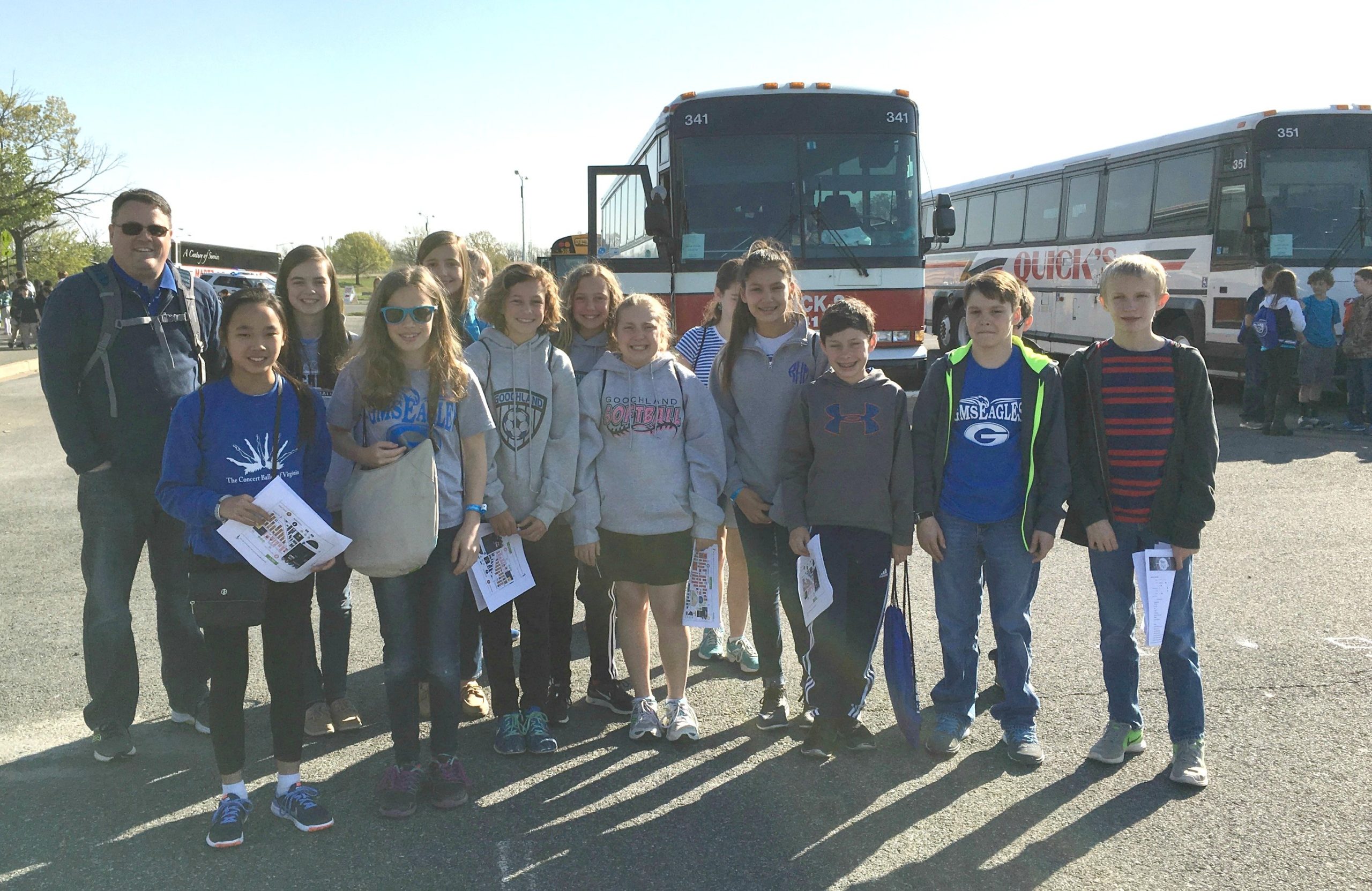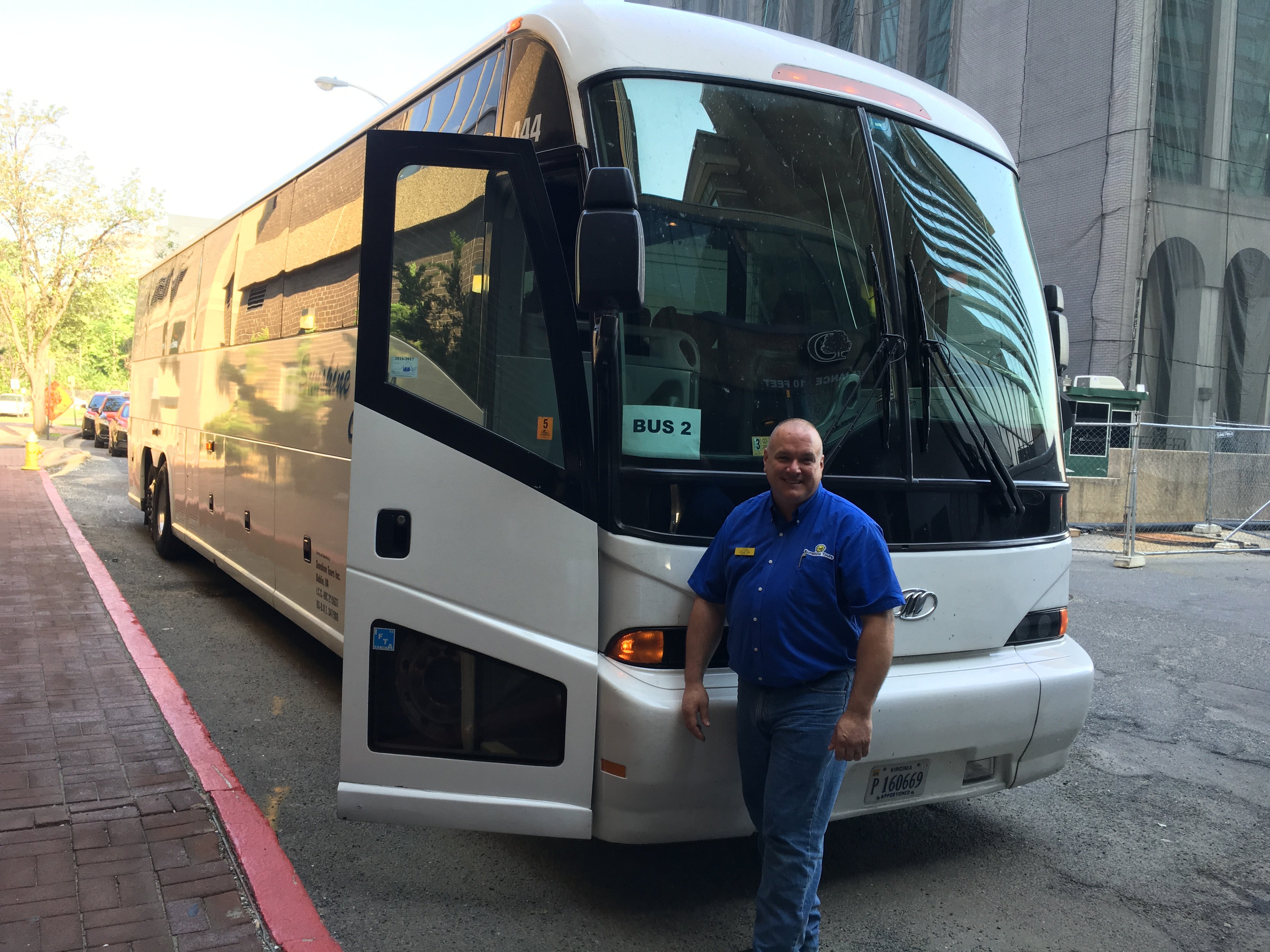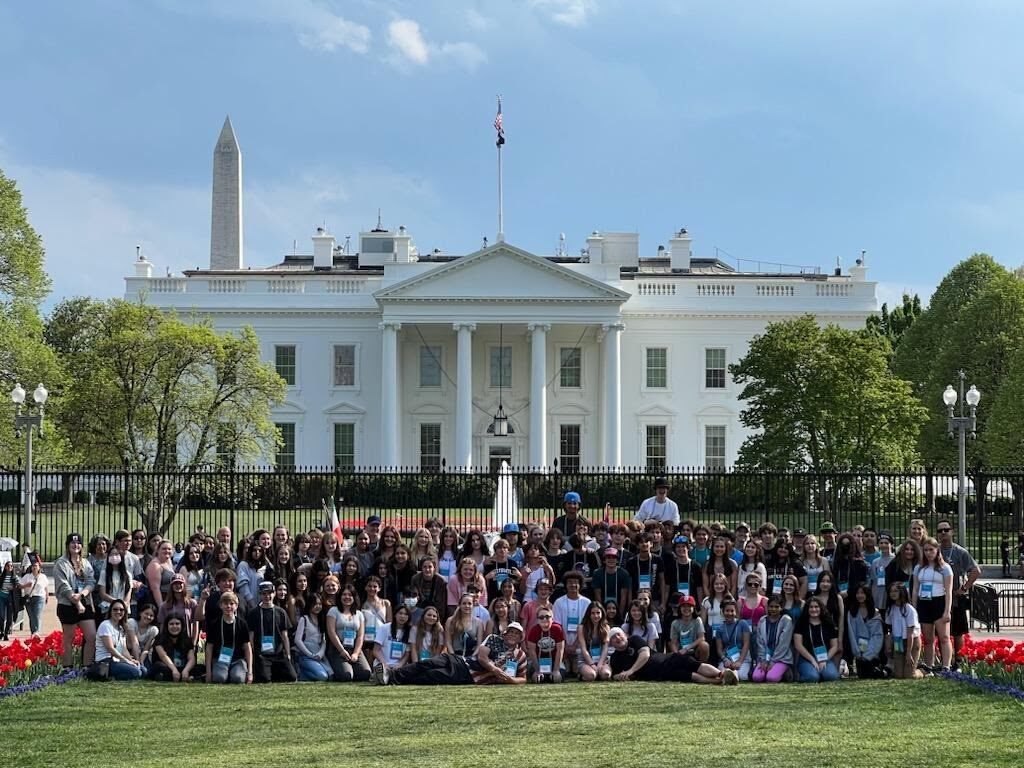New Rules for Coach Bus Drivers May Impact Student Group Travel

Most school groups who travel to Washington, D.C., New York, and other popular destinations along the historic East Coast enjoy the convenience and comfort of touring on a coach bus.
Understanding new requirements from the Federal Motorcoach Safety Administration (FMSA) will help trip leaders work effectively with drivers to maximize touring time while ensuring the safety of the group.
For more than a decade, our travel consultants at NationsClassroom have been developing student tour itineraries that are compliant with guidelines from the Department of Transportation (DOT).
As a result, the recent changes may not be noticeable to our trip leaders considering the major difference made by the new regulations is the way in which adherence to the rules will be monitored.
The new rules, which went into effect in December 2017, require all coach bus drivers to track their service with electronic log devices or ELDs. The ELDs will be monitored with the use of technology to ensure drivers adhere to hours of service (HOS) determined to be in the best interest of safety for all riders.
Prior to the new regulations, many drivers used paper logs to document their service. In circumstances when a trip leader was concerned about packing an itinerary, making extra stops, or pushing through the night to cut expenses, a driver concerned with pleasing the customer could misrepresent hours to exceed allotted time behind the wheel.
 The FMSA regulations have taken decisions about adherence to the DOT rules completely out of the hands of drivers, which means working together to plan an itinerary that respects the guidelines.
The FMSA regulations have taken decisions about adherence to the DOT rules completely out of the hands of drivers, which means working together to plan an itinerary that respects the guidelines.
According to Peter Pantuso, President and CEO of the American Bus Association, the new ELDs are ‘an equalizer.’
“Companies who may have operated under the radar and tried to push driving hour limits now must follow the same legal requirements for drivers’ hours or quickly be identified through electronic logs and reports, all of which will easily be accessible to enforcement officials,” he says in a recent article on ELDs in Destinations, the Official Publication of the American Bus Association.
Understanding the Hours
The current hours of service for drivers can be understood by breaking them down into four requirements, including 10 hours of driving, 14 hours of on-duty service that includes one (1) hour of maintenance, eight (8) hours off duty, and 60 hours of total service during one week.
10 Hours Driving, 14 Hours On-Duty, 1 Hour Maintenance
Drivers may drive up to 10 hours and they may be on-duty up to 15 hours, which includes a half-hour of maintenance prior to and at the end of the day, during a 24-hour period. This means drivers are available to be on-duty to service a group tour for a maximum of 14 hours each day and may drive only 10 hours during that period of time. On duty means any responsibility related to a group, including driving, starting, or parking the bus, guiding, touring, loading and unloading, and other duties.
8 Hours Off-Duty
A driver, after completing all daily work, must be off duty for eight (8) hours before resuming work behind the wheel. This includes parking after dropping a group off at the hotel and starting up in the morning before the group loads the bus.
To be sure drivers has adequate time to prepare for serving a group, they are allotted half an hour for start-up at the beginning of the day and the same for parking and shut down at the end of the day.
For groups that enjoy touring or traveling at night, this may impact morning start times and appointments.
If a driver drops your group off at 10:00 P.M. and the driver allows a half an hour for parking and shutting down, ending on-duty hours at 10:30 P.M., the driver may not be back on duty for start-up until 6:30 A.M., which means the group may start loading buses for touring no earlier than 7:00 A.M. Morning traffic can be challenging in major cities, so following a late evening on tour, appointments may not start until at least 9:00 A.M.
60 Hours
For groups that travel to a touring destination by bus or those who tour for more than a week, this guideline will apply. During a period of seven days, a driver may work or be in service to a group for up to 60 hours. This means drivers must watch their daily service and itineraries closely to make sure hours are not surpassed. If they are, a relay driver will be needed for the group.
Keeping Track

Keeping track of hours is the responsibility of the driver, however, our operations team at NationsClassroom will work with our trip leaders and bus companies in advance to plan itineraries that maximize touring time while staying in compliance.
Adjustments that a trip leader requests while on the road will need to be discussed in consideration of the requirements.
According to Steve Sulligan, founder of Blue Ridge Tours, it is important that tour itineraries are followed closely.
“We cannot predict every minute of the activities and traffic congestion, etc., so this coming year as we transition into the ELD’s it’s going to take teamwork and understanding between school groups, group leaders, tour companies and drivers,” Sulligan says.
How Do Electronic Log Devices Work?
Each bus has a large computer screen somewhere on the dash that is visible for the driver to review their hours of service throughout the day. When a driver starts his or her bus, the computer is activated and the driver must log into the system. When the driver goes into drive mode, the computer begins the actual second by second tracking of drive time.
When the driver stops, the log records how long he or she is still on duty until the driver changes the status to “off duty” at a location like a theme park or a restaurant where no driver duties are required. If the driver is unloading a group, waiting to load, or any time the bus is idle for a group, this counts as on-duty.
At the end of the day the driver will log off duty and a daily summary of hours will appear. This is when adjustments may need to be made to the following day’s start time or travel itinerary if there are concerns about overage.
It also starts the required eight hours of off-duty time. If a driver attempts to restart the next day without the required eight hours of off-duty time, the system will not allow him or her to drive without being put into a violation status and reporting the driver for disciplinary action.
Working as a team will be essential with driving activities under the watchful eye of the onboard computer. Adverse conditions such as traffic, weather, or other circumstances do not allow for a change in mandated hours, so if a driver advises a group to leave early from an activity in order to stay in compliance, guides and trip leaders will need to trust that decision. No matter how much a driver may want to accommodate a group in the name of customer service, drivers must have a safety-first mindset at all times.
What if a driver reaches a limit while on tour?
The first thing to know is that the limits won’t just creep up and surprise the driver. A prompt is given to warn the driver that a violation may occur within two hours. The warning continues every half an hour until either the driver changes his or her status or goes into violation status.
The bus will not shut down or strand the passengers, but drivers are being trained to monitor their status and alert guides and trip leaders that they are approaching the cut-off so adjustments can be made if needed.
If your group is traveling a long distance and starts to near the limit, the driver is required to let the company know so a dispatch can begin to arrange for a relay driver, meaning another driver with fresh hours of service who will meet your bus at a predetermined location to continue the trip.
Groups that travel long distances or overnight by bus may require two drivers to complete the trip in a driver-relay manner with the relay costs associated with a second driver possibly impacting trip pricing.
The Right Team
Teachers working with a professional student travel company like NationsClassroom will have a tour itinerary planned well in advance to make sure the group can visit popular sites while staying within the guidelines.
Every group’s safety is our top priority and we look forward to working with you every step of the way to ensure your group has the trip of a lifetime.
Please Contact Us with any questions about ELDs or Browse Our Tours for inspiring student travel destinations and itineraries.
Originally published January 2018, updated July 2021


